Potrebujeme váš súhlas na využitie jednotlivých dát, aby sa vám okrem iného mohli ukazovať informácie týkajúce sa vašich záujmov. Súhlas udelíte kliknutím na tlačidlo „OK“.
ASTM E2461-12
Standard Practice for Determining the Thickness of Glass in Airport Traffic Control Tower Cabs
Automaticky preložený názov:
Štandardné praktiky na stanovenie hrúbky skla na letisko Traffic Control Tower Kabíny
NORMA vydaná dňa 1.4.2012
Informácie o norme:
Označenie normy: ASTM E2461-12
Poznámka: NEPLATNÁ
Dátum vydania normy: 1.4.2012
Kód tovaru: NS-45355
Počet strán: 17
Približná hmotnosť: 51 g (0.11 libier)
Krajina: Americká technická norma
Kategória: Technické normy ASTM
Kategórie - podobné normy:
Anotácia textu normy ASTM E2461-12 :
Keywords:
annealed glass, deflection, flat glass, glass, insulating glass, laminated glass, load resistance, monolithic glass, probability of breakage, strength, wind load, ICS Number Code 81.040.20 (Glass in building)
Doplňujúce informácie
| Significance and Use | ||||||||||
|
This standard procedure facilitates determination of the thickness of a glass construction required to resist a specified design load with a selected probability of breakage. This standard procedure addresses the following glass constructions: annealed monolithic, annealed laminated, and insulating glass fabricated with annealed monolithic or annealed laminated glass, or both. Use of these procedures assume: The glass is free of edge damage and is properly glazed, The glass has not been subjected to abuse, The surface condition of the glass is typical of glass that has been in service for several years, and is significantly weaker than freshly manufactured glass due to minor abrasions on exposed surfaces, The glass edge support system is sufficiently stiff to limit the lateral deflections of the supported glass edges to less than 1/175 of their lengths. The specified design load shall be used for this calculation, and The center of glass deflection shall not result in loss of edge support. Typically maintaining center of glass deflection at or below the magnitude of three times the nominal glass thickness assures that no loss of edge support will occur. Many other factors affect the selection of glass type and thickness. These factors include but are not limited to: thermal stresses, the effects of windborne debris, excessive deflections, behavior of glass fragments after breakage, seismic effects, heat flow, edge bite, noise abatement, potential post-breakage consequences, and so forth. In addition, considerations set forth in federal, state, and local building codes along with criteria presented in safety glazing standards and site specific concerns may control the ultimate glass type and thickness selection. |
||||||||||
| 1. Scope | ||||||||||
|
1.1 This practice covers the determination of the thickness of glass installed in airport traffic control towers (ATCT) to resist a specified design loading with a selected probability of breakage less than or equal to either 1 lite per 1000 or 4 lites per 1000 at the first occurrence of the design wind loading. 1.2 The procedures apply to common outward sloping cab glass designs for which the specified loads do not exceed 10 kPa (210 psf). 1.3 The procedures assume control tower cab glass has an aspect ratio no greater than 2. 1.4 The procedures assume control tower cab glass has an area no less than 1.86 square metres (20 square feet). 1.5 The procedures apply only to annealed monolithic, annealed laminated, or annealed insulating glass having a rectangular or trapezoidal shape. 1.6 The use of the procedures assumes the following: 1.6.1 Annealed monolithic and annealed laminated glass installed in ATCTs shall have continuous lateral support along two parallel edges, along any three edges, or along all four edges; 1.6.2 Insulating glass shall have continuous lateral support along all four edges; and 1.6.3 Supported glass edges are simply supported and free to slip in plane. 1.7 The procedures do not apply to any form of wired, patterned, etched, sandblasted, or glass types with surface treatments that reduce the glass strength. 1.8 The procedures do not apply to any form of heat treated glass, chemically strengthened glass, or any type of glass with surface treatments intended to increase the glass strength. 1.9 The procedures address the determination of thickness and construction type to resist a specified design wind load at a selected probability of breakage. The final glass thickness and construction determined also depends upon a variety of other factors (see 5.3). 1.10 These procedures do not address blast loading on glass. 1.11 The values stated in SI units are to be regarded as standard. The values given in parentheses are mathematical conversions to inch-pound units that are provided for information only and are not considered standard. 1.12 This standard does not purport to address all of the safety concerns, if any, associated with its use. It is the responsibility of the user of this standard to establish appropriate safety and health practices and to determine the applicability of regulatory limitations prior to use. |
||||||||||
| 2. Referenced Documents | ||||||||||
|
Podobné normy:
Historická
1.6.2014
Historická
1.3.2010
Historická
1.12.2012
Historická
1.10.2010
Historická
1.3.2010
Historická
1.10.2011
Odporúčame:
Aktualizácia technických noriem
Chcete mať istotu, že používate len platné technické normy?
Ponúkame Vám riešenie, ktoré Vám zaistí mesačný prehľad o aktuálnosti noriem, ktoré používate.
Chcete vedieť viac informácií ? Pozrite sa na túto stránku.


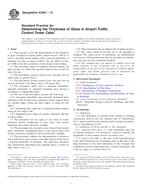
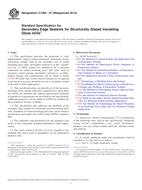 ASTM C1369-07(2014)..
ASTM C1369-07(2014)..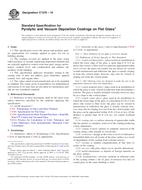 ASTM C1376-10
ASTM C1376-10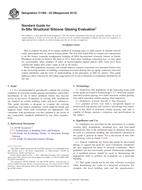 ASTM C1394-03(2012)..
ASTM C1394-03(2012)..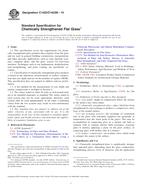 ASTM C1422/C1422M-10..
ASTM C1422/C1422M-10.. ASTM C1443-99(2010)..
ASTM C1443-99(2010)..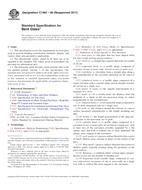 ASTM C1464-06(2011)..
ASTM C1464-06(2011)..
 Cookies
Cookies
